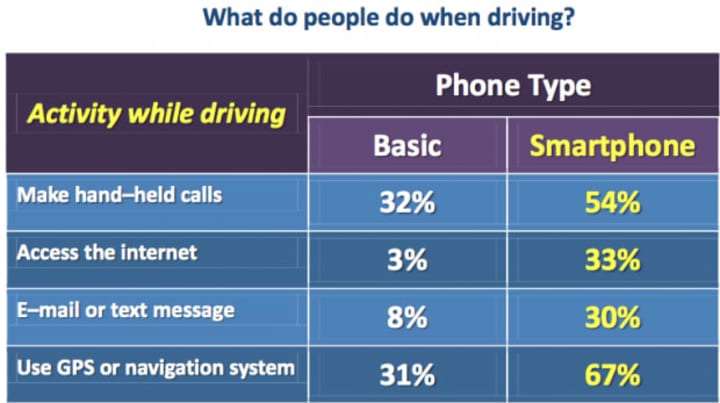WESTCHESTER COUNTY, N.Y. -- Car crashes are the leading cause of death for American teenagers, but a new study suggests a far bigger problem.
The National Highway Traffic Safety Administration (NHTSA), which uses statistics based on police reports, previously estimated that teen distracted driving constituted 14 percent of all collisions. However, a study released in March by the AAA Foundation for Traffic Safety -- which used live footage instead of police reports -- found a 400 percent increase, concluding that distraction was a factor in nearly 6 out of 10 moderate-to-severe teen crashes. AAA analyzed the six seconds leading up to a crash in nearly 1,700 videos of teen drivers taken from in-vehicle cameras they knew were in their cars.
It took decades for statistics on fatal drunken driving crashes to translate into tougher DWI laws. Advocates for strict laws against cellphone use by drivers say they encounter the same detached attitude today.
That disconnect frustrates crash victims families, including Ben Lieberman of Chappaqua. His 19-year-old son, Evan Lieberman, was killed as a backseat passenger in Orange County in 2011. The teen driving the car blamed the crash on his own drowsiness.
Three years later, an administrative law judge ruled that the driver, by then 21, violated several traffic laws, including using his cellphone while driving. The driver’s mobile phone was never investigated by the police, but cell records subpoenaed in a civil lawsuit found the driver used his phone.The.crash happened near the Bear Mountain Bridge on a section of Route 6 without cell service. There was no ability to prove whether the phone was used or not being used at the time of the collision. The case received widespread media coverage.
Ben and Debbie Lieberman and another parent whose son was injured in the 2011 crash co-founded an organization called Distracted Operators Risk Casualties or DORCS.org to press police and state legislators to treat distracted driving like drunken driving.
They are working to raise awareness through DORCS and another nonprofit called EvansTeamNY. But, they said they are frustrated by the lack of reliable statistics and law enforcement procedures, and lack of training for handling accidents involving cellphones.
"What we discovered from our horrific situation is there is no police protocol at all,'' Lieberman told Daily Voice. "Police don't want to look at the phone."
Unlike the clear protocol for testing drunken drivers, there is no mandate to investigate cellphone use by drivers involved in accidents.This contributes to the lack of reliable data that might result in tougher laws, Lieberman said.
The problem will never be solved, Lieberman says, unless legislation and education is accompanied by strict enforcement against cellphone use by drivers.
Today, if a driver spots another driver holding a bottle of beer, they might call the police, Lieberman said. "You're not outraged when you see them holding an iPhone,'' he said. "It's a lot more dangerous than people think. . . .It's more than awareness that has to change."
Click here to follow Daily Voice Pelham and receive free news updates.




